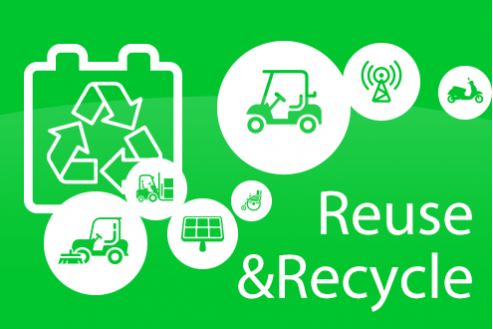Recycling can benefit your community and the environment. Recycling Basics
Recycling is the process of collecting and processing materials that would otherwise be thrown away as trash and turning them into new products. Recycling can benefit your community and the environment.
Benefits of Recycling
• Reduces the amount of waste sent to landfills and incinerators;
• Conserves natural resources such as timber, water, and minerals;
• Prevents pollution by reducing the need to collect new raw materials;
• Saves energy;
• Reduces greenhouse gas emissions that contribute to global climate change;
• Helps sustain the environment for future generations;
• Helps create new well-paying jobs in the recycling and manufacturing
industries in the United States.
Steps to Recycling Materials
Recycling includes the three steps below, which create a continuous loop, represented by the familiar recycling symbol.
Step 1: Collection and Processing
There are several methods for collecting recyclables, including curbside collection, drop-off centers, and deposit or refund programs. Visit How do I recycle... Common Recyclables.
After collection, recyclables are sent to a recovery facility to be sorted, cleaned, and processed into materials that can be used in manufacturing. Recyclables are bought and sold just like raw materials would be, and prices go up and down depending on supply and demand in the United States and the world.
Step 2: Manufacturing
More and more of today's products are being manufactured with recycled content. Common household items that contain recycled materials include:
newspapers and paper towels;
aluminum, plastic, and glass soft drink containers;
steel cans; and plastic laundry detergent bottles.
Step 3: Purchasing New Products Made from Recycled Materials
By buying new products made from recycled materials you help close the recycling loop. There are thousands of products that contain recycled content. When you go shopping, look for:
Products that can be easily recycled, and Products that contain recycled content.
Here are some of the terms used:
Recycled-content product. This means the product was manufactured with recycled materials, either collected from a recycling program or from waste recovered during the normal manufacturing process. Sometimes the label will tell you how much of the content was from recycled materials.
Postconsumer content. This is very similar to recycled content, but the material comes only from recyclables collected from consumers or businesses through a recycling program.
Recyclable product. These are products that can be collected, processed and manufactured into new products after they have been used. These products do not necessarily contain recycled materials. Remember not all kinds of recyclables may be collected in your community so be sure to check with your local recycling program before you buy.
Some of the common products you can find that can be made with recycled content include:
Aluminum cans
Car bumpers
Carpeting
Cereal boxes
Comic books
Egg cartons
Glass containers
Laundry detergent bottles
Motor oil
Nails
Newspapers
Paper towels
Steel products
Trash bags
(via http://www2.epa.gov/recycle/recycling-basics)




 Global / English
Global / English Global / English
Global / English USA / English
USA / English












